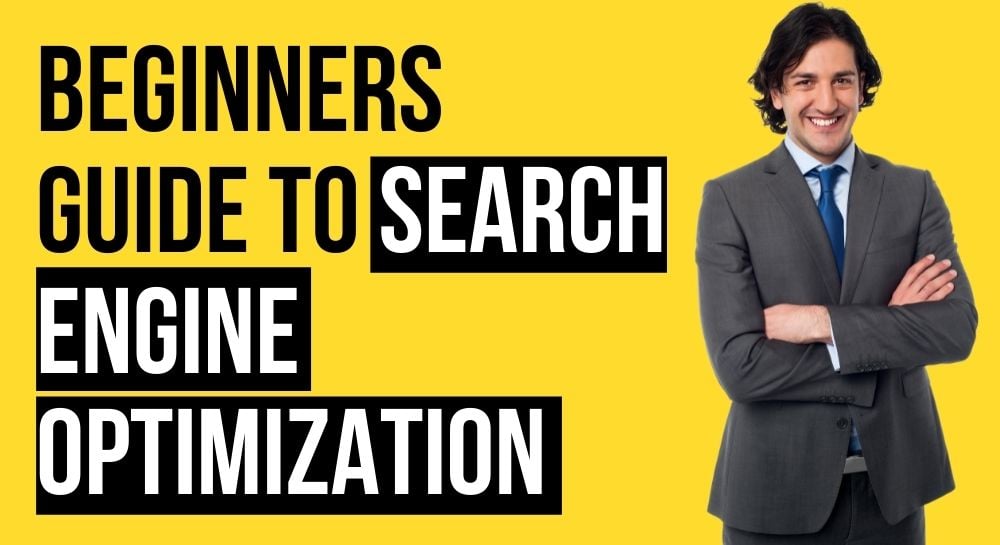For those of you who are new to the world of SEO, this blog post will provide a general overview of how search engine optimization works and what your role is in making sure that your website ranks highly. SEO helps your business rank higher in an online search by increasing visibility on web pages through various ranking factors such as keywords, backlinks, and social media engagement.
We will cover some basic terminology and then get into the nitty-gritty details of how search engines work.
What Is SEO?
SEO stands for Search Engine Optimization which means improving the way your site ranks in search engine results pages (SERPs) by using specific strategies that help you rank higher than other sites with similar content. This can be done by creating high-quality original content, building backlinks from quality sources, and placing keywords strategically throughout your page or post titles and text so they are more easily noticed by Google’s algorithm when crawling through the Internet looking for new websites to index.
How search engines work.
Search engines are a useful tool for finding information online. They work by analyzing the text content of web pages and matching them to search terms typed into their engine, usually by humans. Search engines rank results according to relevance as well as popularity of the site that is hosting it. The most popular search engine in use today is Google, which has been around since 1998 and was originally known as Backrub before changing its name to Google in 1997.
Search engines can also be used for more than just finding things online – some people use them as an advertising platform or even to locate local businesses nearby.
Why is SEO important?
SEO is the process of getting traffic to your website. It’s important for a successful business because it can help you grow and reach new customers, which will ultimately lead to more revenue.
SEO is a digital marketing strategy that helps promote your website or blog by increasing the visibility of your web content in search engine results pages. SEO can help increase traffic to your site and improve conversion rates, as well as build brand recognition.
SEO techniques can be broken down into two major categories: on-page optimization and off-page optimization. On-page optimizations are changes you make to the content, HTML code, and URL structure of your site; these types of optimizations usually have longer impact times since they take time for crawlers to find them. Off-page SEO refers to link-building strategies that involve other websites linking back to yours from their sites; this type of SEO has a shorter impact.
What are the benefits of SEO?
SEO is the process of optimizing a website to rank higher in search engine result pages. The benefits include increased visibility, better conversion rates, and increased traffic. SEO helps websites become more visible on the internet by using various techniques such as backlinks (links from other sites that point to your site), keyword optimization, and content optimization. These techniques help ensure that your site will be found when someone searches for keywords related to what you offer or sell – resulting in an increase in traffic on your website. SEO also improves conversion rates by making it easier for potential customers to find what they are looking for on your site and purchase products or services offered there. With improved visibility and conversion rate, SEO can dramatically improve business performance.
Search engine friendly websites:
Search engine-friendly websites are imperative to the success of your business. The more traffic you can get, the more money will come in. This post is going to help you understand what makes a website search engine friendly and how to make changes for better results.
What does it take to be considered a “search engine friendly” site? There are three main points that need improvement: page speed, mobile optimization, and content relevance.
Search engine-friendly websites are essential for acquiring organic traffic. A search engine-friendly website is one that has been designed to rank higher in the search engines and provide a better user experience. Proper SEO can help businesses acquire more customers, increase web traffic, and drive revenue.
Why Internal Links are important:
Internal links are the backbone of any SEO strategy. When you create and use internal links in your blog posts or website, it allows search engines to know that your content is relevant and of high quality. This is important for Google rankings because they want to show their users the best possible results when they conduct a query.
Internal links help pages rank higher and get more traffic because they show Google that this site has something relevant on every page. Internally linking different pages helps them all rank better in search engines too, because when someone searches for one topic on the website, the other related topics will also be found through these internal links.
SEO Basics Breakdown
Choosing the Right Keywords
It is important to choose the right keywords for your blog post when you are writing it. Keywords will determine how many people find your article and read it. If you have a lot of traffic, then more people will see your content and share it with others. The wrong keywords can make readers leave after reading just one sentence of the blog post. It’s important to identify what words would be best for promotion in order to increase website traffic or sales conversions. Choosing the right keywords can help an article rank higher on search engines like Google which means that more people will visit your site.
Quality of Content
Content is important in search engine optimization because it provides the necessary information for a website to rank higher on SERPs. The more content, the better. Search engine optimization is not just about keywords and backlinks; it’s also about content. Content is what attracts the reader, and in turn, search engines. It’s this combination of organic traffic sources that leads to higher rankings on Google or Bing. You should focus more time on creating quality content for your target audience. Fresh and engaging blog posts with valuable information always attract new visitors from both search engines as well as social media channels such as Facebook and Twitter. That is why content creation should be at the forefront of your SEO strategy.
Understand user intent
If you want to succeed with SEO and content marketing today, Search Intent needs to be a big part of your approach. Understanding what people are searching for and how they interact with your site is very important and a significant SEO strategy. Search engine optimization is the process of enhancing a website’s rank in search engines. And SEO will be successful if you understand what a searcher intends when they perform a query. Common types of Search Intent include informational, commercial, navigational, and transactional.
Here are some questions to ask yourself when determining what user intent your website has:
1: What type of content does my site offer? Is it informational, educational, or entertaining?
2: Who is my audience? Do they want more information about something specific or do they just want to be entertained with videos and pictures of cats doing funny things?
3: Why did users come to my site from Google in the first place?
These questions should help you determine what type of content you need on your site and who your target audience is.
Freshness of content
A blog post is a message published on your website, and it is important to publish them regularly. The more you share posts with the search engines, the higher your site will rank in their results. If people are finding your content via search engine results pages (SERPs), then they are also likely to click on those links and visit your site for more information as well. There are many benefits of publishing blog posts frequently: You’ll be able to stay relevant with current events; it can help build trust with potential customers; people will not forget about you or get bored easily; and most importantly, these posts will attract new visitors who might not have found you otherwise.
As we have discussed, there are many techniques you can use to increase your website traffic and conversions. We hope this article has given you some ideas on how SEO or digital marketing might help your business grow. If you would like to learn more about our process for creating a stellar SEO strategy that drives sales, please call us today at +91 90288 31959 or email us at: hello@digitaldaftar.in
Frequently Asked Questions
What are SEO tools?
SEO tools investigate the potential of Web pages for high placement on search engine ranking pages. They provide information on backlinks and keywords as well as insights into SEO competition on the Internet. To succeed in SEO, it is important to have the right tools for the job. A couple of the most popular free or cheap options are Google Analytics, SEMrush, and Moz Pro Insight. These three programs will give you all the information you need when it comes to your rankings on Google search engine results pages (SERPs).
Can I pay Google to rank higher?
The answer is No, unfortunately, because Google is committed to keeping our search content useful and trustworthy. But if you already rank well with Google in organic searches then paying for an ad might help push up, you are ranking even more.
How much does SEO cost?
If you pay for an SEO service to an SEO company in India, you will normally be charged between INR 5000-25000 a month (60,000 – 3,00,000 a year).



